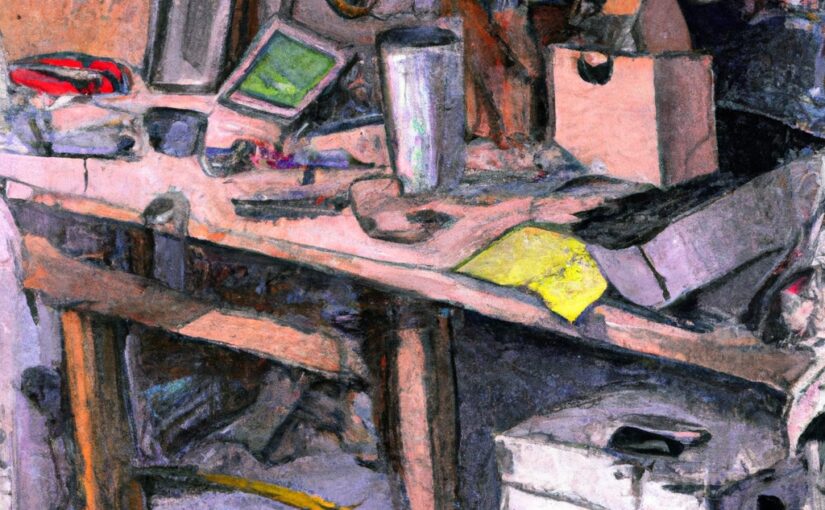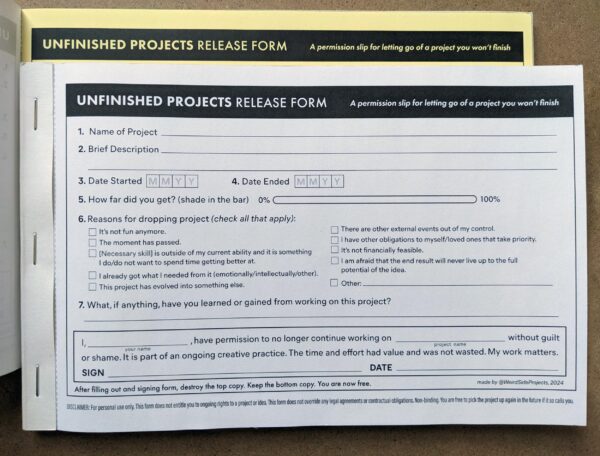In this blog post, I’ll share with you my methods for dealing with abandoning books, movies, and personal projects. You see, I have a bit of a perfectionist/completionist streak. That’s worked against me in these areas. I’m able to keep it in check in my work life. When writing code on a deadline, it’s good to echo the mantra “the perfect is the enemy of the good.” As long as you cover your bases with mindfulness toward security and functionality, having “perfect code” ends up being an academic exercise that capitalism does not want to pay for.
But in my personal life? I haven’t had a similar mantra to keep perfection and completionist thoughts in check. That’s something I’ve been working on, and in recent months have found strategies that help. It’s all about giving yourself permission to stop.
Books
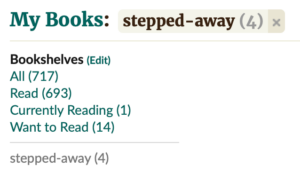
I enjoy reading. I like having time in the morning bus commute to tuck into a good novel. But once I start reading a book, it’s difficult for me to pick up a second one until I’ve finished the first. Normally that’s fine. It’s difficult for me to remember the two plot lines if I’m reading two novels simultaneously. The problem hits when I find out that this isn’t a book I’m enjoying. I find I have to trudge on through the end, whether I like it or not.
This, in turn, makes me resent the book and resent reading. I’ll find other things to do. I’ll scroll through social media, play mobile games, or just space out while listening to music on the bus. I’d usually put a book down for a couple of months, with a background mental battle: one side feeling guilty for not finishing and the other side feeling resentful for being forced to read something I’m just not all that into. It could take anywhere between one and six months for those feelings to subside. It is never a conscious decision to abandon the book I wasn’t into, but a combination of fading memory and learning about some new book that I’d like to start reading.
I’m not sure whether I heard this strategy somewhere or if I made it up myself, but I use Goodreads to track my reading. Out of the box, it comes with three “shelves:” Read, Currently Reading, and Want to Read. For all the reasons above, I can only ever have one book in the Currently Reading shelf and I have to finish it before it can move into Read and a new book can take its place. Late last year I created a fourth bookshelf: “Stepped Away.” If I’m just not having a good time reading a book, this new shelf gives me a certain amount of mental permission to just slide it over to the Stepped Away shelf and move on with my life. It’s such a little thing and doesn’t seem like it should matter, but it does a lot to trick my brain into granting permission to not have to finish it. I’m still tracking the book and the fact that I started it. I’m not deleting it entirely from my Goodreads. I’m just mentally (and on the website) putting it aside to make room for something else. Who knows? Maybe I’ll return to it later — but probably not. The shelf keeps it open-ended, but also out of mind.
[UPDATE] — After publishing this, my friend Bells reached out and shared their methods, which I will likely also incorporate into my bookshelf-base process: “When it’s a book and I don’t want to finish reading it for whatever reason, I will go find somebody else’s summary of it or I will jump to the end and read the last 10 pages or at the very least read all of the chapter titles to see if that gives me some clue as to what happens… One time I had to read the first paragraph of each chapter because literally I couldn’t find anybody’s summary of it it was just too obscure.”
Movies
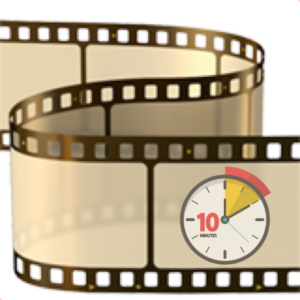
I find a similar thing with movies. I’ve never walked out of a bad movie at the theater. But the difference with movies is that whether or not I’m actively participating (such active participation is required with reading), the movie just plays out in front of me and will have a finite end within a couple hours. The credits will roll and I’ll be mildly grumpy, but at least it’s over. I made it through.
With movies, at least streaming at home, I’ve latched onto “the ten minute rule.” If anyone watching the movie is not into it within the first ten minutes, it’s okay to pull the plug. Think of it like a Kindle sample. If you’re not grabbed in the first chapter (or first act/scene), then it’s okay to bounce out of there. It just might not be for you, and that’s okay.
Personal Projects
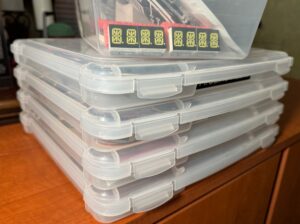
I don’t know about your personal projects. Maybe you have a half-finished painting, a 50-page blank book with two scrawled poems from several years back, or a half-rebuilt Chevy on blocks that’s slowly collecting dirt and moss. For me, it is a bunch of “Maker” projects: various combinations of electronics, laser-cutting, 3D-printing, software, bots, and so on. Each physical project lives in a little Tupperware bin so that I can pull it out, work on it, and stash it out of the way when I need to take a break. Each software project exists as a folder on my hard drive and as a whisper in the back of my head that I should get back to it.
Every time I’m in my workshop, I see the stack of Tupperware project bins with a mix of feelings. I feel guilt for having the unfinished projects and the lack of motivation to follow through. There’s more guilt when starting a new one, in the presence of the looming pile of old projects. I’ve never been diagnosed with ADHD and don’t feel that I have it, but there’s a little sparkle at starting a new project and a certain amount of slog in following certain ones through to their logical end.
Don’t get me wrong. There are plenty that I do complete. This blog represents projects that I’ve not just finished, but also documented and written about. But for every one that makes it through, there are several sitting in bins. Sometimes for years.
I missed out on the ordering window, but I recently ran across an Unfinished Project Release Form. This formalizes giving yourself permission to let go. To abandon and to enumerate the reasons for doing so. Maybe it’s no longer fun. Maybe it turned out to be beyond your skill level. Maybe the idea eclipsed the reality. Whatever the reason, you can fill out the form (in duplicate), destroy one copy, and set yourself free.
If I’m not able to order a kit, I may have to put “re-making” something like this form in the, ahem, ever-growing project pile.
Summary
These are my strategies for abandoning things and moving on. Maybe some piece of this will resonate with you. Or maybe you have a strategy that you’d like to share in the comments. Just remember that it’s okay to be finished part-way through.
